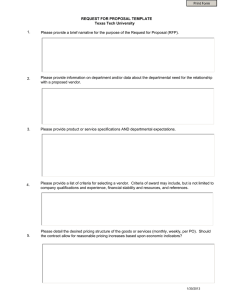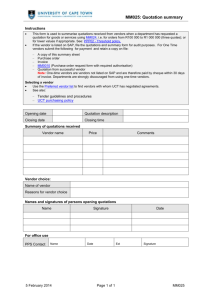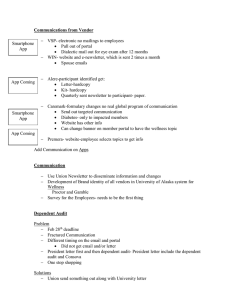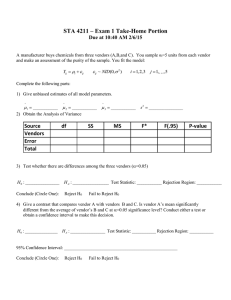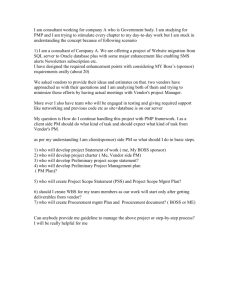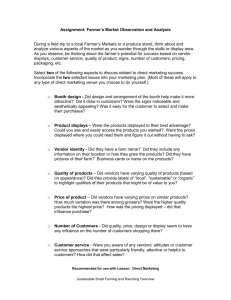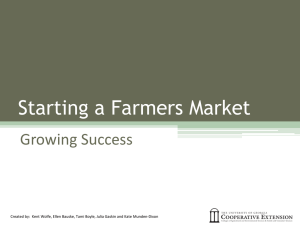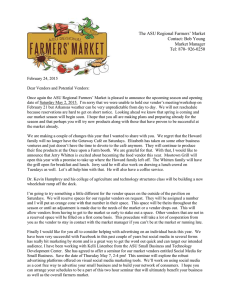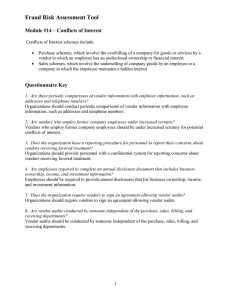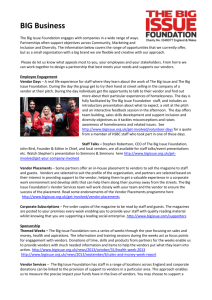Organizing Around Food - Illinois Department of Agriculture
advertisement
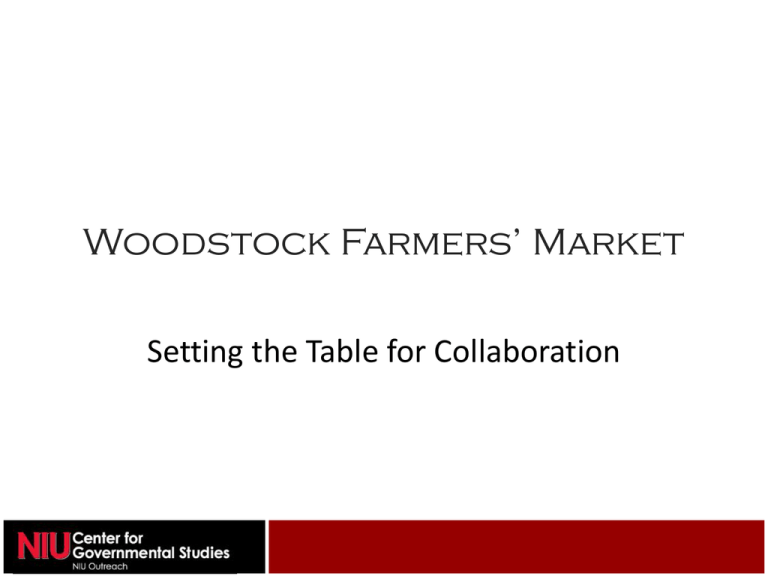
Woodstock Farmers’ Market Setting the Table for Collaboration History • Producer-only market. • 1982-2004 five vendors. • Located on space donated by local merchant. • Operated within Chamber of Commerce with limited autonomy. • First grant received from Illinois Dept. of Agriculture for promotion of Market in 2004. • Last grant received from USDA for education on eating locally year round. Stakeholders b Vendors Municipality Local Merchants Customers Community Groups Vendors • Need to increase number of vendors and products offered. • Need to determine what type of promotion is most effective. City of Woodstock • Increased services needed for increased traffic. • Health Department advisory for food sampling. • Safety of customers if moved to street. Local Merchants • Concerned about diminished parking. • Effect of Market on business. Customers • Desired increased options for local and organic produce, particularly berries, mushrooms, eggs, free-range meats and dog treats. • Information about the various methods of agriculture (organic, natural, etc.) Customers • Many indicated interest in joining the Market but felt they needed more information before committing. • Viewed the Market as an “event” and requested activities such as music and cooking demos. Community Groups • Wish to use the Market space for community education. Current Status • Recognized as #1 in the state by Local Harvest. • Vendor base increased to 35. • Market surrounds the Square. • Parking signs strategically directing customers to additional parking. Current Status • Increased vendor participation allows for market manager. • Cross marketing options with restaurants and other businesses. • Split from Chamber for increased autonomy. • Two advisory positions created on board for increased feedback. • Increased business allows for Market to be eligible for Hotel/Motel Grant. Current Status • Increased vendor base allows for additional funds to be offered to community groups. • Community groups offered free vendor space. • Music and chef demos offered for both Markets. Institutional Engagement • High schools receive free vendor space. • These have historically been groups that are not often involved with extracurricular activities. • University of Illinois Master Gardeners provide education for customers. • Farmers’ Market 101 offered at community college. • Marketing for local cheese production developed by University of Illinois class. Engagement • Oregon State University tools used for rapid market assessments. • Market has become involved with a cohort of universities involved in value-added product. • Latest grant provides education on eating locally throughout the year through preservation of product and production of value added product by vendors. Future School gardens Food incubators Agriculture in the classroom Business development Food councils Agriculture Conservation Easement Commission for farmland Institutionalizing organic and local food
